From the emails I’ve gotten about @Alison Friedli’s December site art (pictured directly below), I know many of you have been waiting with bated breath for this Close-up, and I’m thrilled to say it’s finally here! Woo hoo! (My apologies for posting a bit later than usual. I was waylaid by the holiday rush and other unexpected end-of-the-year work yanks, but things are finally beginning to settle back into their normal, but still frenetic, pace. ![]() )
)
Yes, I’ve gotten a fairly steady stream of inquiries ever since I posted Alison’s stained glass Christmas cookies in our banner and backdrop. The most common went something like this, “Wow! Who made the Santa cookies in the background of your site? They’re great! I love them!” Others went further to ask how she achieved her sublime stained glass effect. I, of course, referred everyone to Alison, but, even so, I want to take this opportunity to make sure this question also gets answered here. (I too am dying to know! ![]() )
)
As you may have already learned by reading Alison’s bio in her recent forum intro, she harks from Santiago, Chile, but spent many of her early years in Patagonia on her parents' sheep farm. Now back in Santiago for 11 months of the year (she spends the other month on the farm), Alison is nearly 100-percent dedicated to teaching cookie art. This past year, she also made her first foray into online classes, investing many hours in understanding best practices for filming, editing, and distributing those classes. That being said, I would be remiss if I didn’t tap Alison’s brain about teaching, and so that’s also part of my interview plan. Enough said. Let’s get started, shall we?
![]()
JMU: Hi, Alison! I’m thrilled to have you here. I’ve long admired the charming work you’ve posted to our site (your Goldilocks vignette, above, being one of my faves)! As primarily a teacher myself, I’m also super eager to hear about your teaching experiences, and how they might be different than mine and those of others in the United States (US) and elsewhere.
But let’s begin with when you started teaching. You mentioned in your bio that you’ve been decorating cookies for about 10 years, but that it took you a while to take the leap into teaching. So when did you teach your first class? And why did it take you so long to dive in?
![]()
AF: That's right, Julia, it took me a long time to dare to start teaching. It's one thing to decorate alone and at a calm pace. It's another thing to have to decorate with the pressure of having to explain all the hows and whys and to finish the project within the duration of the class. Since I learned the basics of cookie decorating by trial and error (before the eruption of YouTube tutorials, blogs, and Pinterest), I didn't have any theoretical background and was afraid of the questions students might ask me, and how to answer.
My first class came, finally, in May 2015, and I have not stopped since then. Every month, I hold a new class with a different theme and different techniques.
![]()
JMU: Well, from what I've heard from your students, they're thrilled you took the leap in 2015! But, why did you decide to teach rather than participate in the cookie decorating business in some other way, i.e., by selling cookies or cookie-related products?
![]()
AF: For several years, I decorated cookies and arranged cookie bouquets for different events, but I started to get bored with always doing the same sort of designs. I wanted to learn different techniques and to create my own cookie designs and cookie cutters. I needed more freedom to let my imagination fly! Also, my customers began to request classes, and there was one in particular who persisted until I was convinced and took the jump. To this day, I thank her very much, because preparing and designing ten different classes in a year is a very interesting challenge.
![]()
JMU: I bet it is! But, can you back up a bit and tell us how your first class was structured? For instance, how many people did you teach? Was the class located in your house or elsewhere? Which techniques or cookie projects did you teach? How did you price the class? And why did you elect to structure your first class this way?
![]()
AF: I give classes in my dining room. I have a table (pictured above), inherited from my grandfather, that is quite big and can sit a maximum of seven students. My first class was a very simple project with very basic techniques for beginners. The set below is, in fact, what we decorated.
I started by preparing royal icing; then the students adjusted it to the two consistencies we were going to use. After that, I went on to explain how to prepare and bake cookies, with all the tips and tricks to obtain perfect results. Finally, we started decorating.
It was a much longer class than scheduled, because I did not realize that the students would take so much longer than me to decorate and would ask so many questions on processes I had taken for granted as obvious. But all went well.
![]()
JMU: Wow, what a lovely first class! And I know . . . I sometimes have trouble gauging class length, especially when teaching projects for the first time or when working through a translator. I almost double my time estimates for classes that are translated!
Are your in-person classes structured any differently now? If so, why? Were there lessons you learned from your early classes that led you to change structure? If so, can you share some of those lessons with us?
![]()
AF: Most of my students come to classes all year round, so I have a progression of classes for beginners as well as advanced decorators. Beginner classes are longer in duration and contain several basic techniques that can be used to decorate cookies for any occasion. I include photos in my cookie recipe to show, step-by-step, how to roll, cut, and bake perfect cookies. I also provide a list of local pastry shops where students can buy the necessary supplies.
For the advanced classes, I don't prepare royal icing in class. Everything is ready so that students can come in and immediately start work, with a focus on learning new techniques or projects. Generally, I design a set of cookies around a special event like Mothers' Day, a christening, Valentine's Day, or whatever is seasonally appropriate. For the advanced classes, I also include all of the cookie cutters, so that students can make and give away or sell the same cookie project we did in class.
I have also created a Facebook group for only my students, where they can post photos of their cookies, share information, ask questions, etc. I really love this group, as it is a very collaborative and positive environment, and especially helpful for online students. I love it when every one chips in to help with a question or concern.
![]()
JMU: It's great that you have a group as an extension of your classes! I'm sure students feel they are getting extra value, and I imagine their questions there help you fine-tune your teaching approach.
That all being said, what top three tips would you give to cookie decorators who want to get into teaching in-person classes?
![]()
AF: First, have lots of patience, and share your joy and hospitality, so that students feel welcome and comfortable. Second, be sure each student has everything s/he will need, so s/he doesn't have to share or wait for a turn to use something. And, third, I always have on display the next project, for the next class, so students can see it firsthand, and I can hopefully spark their interest in taking that class!
![]()
JMU: Great marketing idea! It's seems like you're very organized, and always thinking ahead! Now, let’s turn to your online class business that you launched in 2017. Why did you decide to expand into online classes?
![]()
AF: Distances in Chile are quite large (Chile measures 4,300 kilometers, or about 2,670 miles, from north to south), and, for us, it is quite expensive to travel by plane. Also, thanks to social networks, people from very far away started to request classes. So I started to think about online classes primarily to remove travel barriers.
![]()
JMU: Makes sense! Where do you distribute those online classes, i.e., on what platform? Why did you decide to distribute there? What other platforms did you consider, and what were the pros and cons of each?
![]()
AF: The truth is that I only know YouTube and Vimeo. I chose Vimeo Plus, which allows creators to upload unlimited HD (high-definition) videos, and students to view without the interruption of advertising as on YouTube. Students can access each video with a password once they've paid, so there's a clear paywall.
![]()
JMU: Vimeo Plus is great! Here in the US, there are other platforms, such as Pathwright, that allow you to create your own online "school" and to bundle videos with course notes, quizzes, and other types of educational material. I just started exploring Pathwright myself, as I have some courses that I filmed in Brazil a few years ago that I want to distribute. But that platform is certainly more expensive - and more complicated to set up - than either YouTube or Vimeo. Anyway, I'm still not sure which way to go . . . finding time to start another big project is my greatest challenge! ![]()
Are your online classes structured and/or priced any differently than your in-person classes? If so, why? If not, why not?
![]()
AF: Yes, my online classes are cheaper, since I do not have to spend time preparing for each class. I can sell the same videos as many times as requested. I always include a video in each course that is completely dedicated to royal icing (consistencies, coloring, etc.), as well as a second video that includes step-by-step decoration of each cookie in the set, so that even beginners can follow the class.
![]()
JMU: What was the biggest challenge you had in getting your online classes started? Was it related to the preparation? shooting? editing and post-production? distribution? or something else? And how did you overcome this challenge?
![]()
AF: Actually, each step was a huge challenge! I had never handled a video recorder . . . much less an editing program. I really had to think a lot about how to express myself in very few words, yet still explain what I was doing well enough that students could end up with decorated cookies looking like the ones I used to sell the class. I think distribution was the simplest part of the entire process.
![]()
JMU: Is there anything you would have done differently about launching your online classes now that you have the benefit of hindsight? If so, what and why?
![]()
AF: No, not really. I am very happy with the results up to now. Many students who bought beginner classes have come back and bought a second and third class. Many of them are selling Christmas cookies after only a beginner class, so I am really happy about that.
![]()
JMU: Have you taught in-person classes in other countries? If so, where? Is there anything unique to the culture or business climate in Chile that makes teaching classes there different than in the other places where you’ve taught? Or different than what you’ve heard reported by teachers in other countries?
![]()
AF: No, I've only taught here in Chile. The only class I have given at a different place than my home was just a few weeks ago at a local pastry shop. So I really don't have much to say on this topic.
![]()
JMU: It sounds like your home-based business keeps you busy enough as it is. Yikes! Before we run out of space, I can’t forget to ask about your stained glass technique! Can you please explain how you achieved the look on your December art, and in the darling angel cookies, above? What medium do you use for the “glass”? Do you outline first, before applying the “glass”, or vice versa? What about the finer facial details? When and with what are they applied? Are there any other tricks we should know?
![]()
AF: This is a fairly simple technique, but, to achieve it in Chile, I had to study and do a lot of research since corn syrup (which is used in most countries for this technique) is not available here. I replaced it with glucose diluted with a few drops of vodka, so I could apply it with a paint brush. I used powdered food colorings to color the glucose before applying it to the cookie.
But, first, one must ice the cookie with white royal icing, and let it dry completely. (I get better results if I use royal icing made with albumin - pure egg white powder - as opposed to one made with meringue powder, which has other additives.) Then, with a #1 tip, outline the different sections with black royal icing, and let that icing dry completely. Next, use an edible marker to draw the facial details, and petal dust to color the cheeks. The last step is to apply a thin (but not too thin) layer of the glucose mixture with a paint brush.
![]()
JMU: Ahh, you make that sound so easy! I’m also a huge fan of the quillwork cookies (pictured above) that you posted to our site a while back. Can you also tell us your secrets for perfect quillwork?
![]()
AF: Now that was a real challenge! I had never tried the technique, not even with writing paper. I started by playing with wafer paper just to get the feeling of it and how to use the tools. I didn’t have much experience with wafer paper, so I thought it would be the same as working with regular quilling paper - great mistake! It cracks and tears with tremendous ease. So I figured out it needed a bit more moisture . . . but water is its enemy number one . . .
Then I remembered how my mother put a bit of apple in her ginger cookie tin when the cookies were too hard to eat. So that is what I did. I cut all the wafer paper strips and put them in a sealed container for 24 hours, so they could absorb the humidity from the apple and become less brittle and more pliable. A great trick, as it worked fine! However, a very important tip: the apple must not touch the wafer paper! I learned that by experience!
I used the same quilling tools as for regular paper.
![]()
JMU: Thank you for those details - and that apple trick is just brilliant! I'll have to try it, as I was fumbling with some extra-dry wafer paper just a few days ago. It's especially brittle in this super cold weather we're having!
And, last but not least, my usual parting question! Where would you like to see yourself in the cookie world in three years? What are your cookie dreams and aspirations?
![]()
AF: Here in Chile, we do not have easy access to AmeriColor or Wilton products, or decorative supplies like sprinkles and dragées for cookies. I would love to import some of the wide variety of products and tools that you have in the US. Maybe that could be a challenge for the future . . . At the moment, I would like to continue working on and expanding my online classes, and enjoying my students. One of the things that brings me great pleasure is seeing how they can start producing and generating income with what I teach them. For me, I think that is where my work has the most value.
![]()
JMU: And what great value that is! Thank you for taking the time to share your experiences with me and the members of Cookie Connection. I've particularly enjoyed hearing about your teaching practices. You've given me more than a few ideas for improving my own, which is priceless, so thank you again!
You can follow Alison on Facebook or here on Cookie Connection. You can also learn more about her classes by visiting her shop on Facebook.
All cookie and photo credits: Alison Friedli

Cookier Close-ups is the place on Cookie Connection where we celebrate the change-makers of the cookie decorating world. Whether forging new enterprises, inventing novel decorating techniques, or consistently charming us with their cookie decorating prowess, each of our featured thought leaders has redefined in his/her distinctive way how we interact, create, or otherwise do business here in cookie space!
If there are other cookiers you'd really like to get to know, please post requests in this forum. We'll do our best to round them up for an upcoming Cookier Close-up! Thanks!



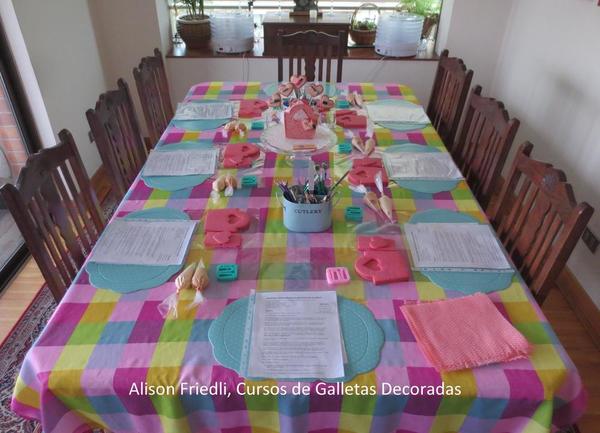




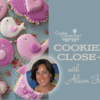


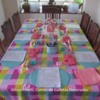
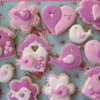


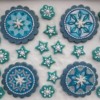
Comments (3)